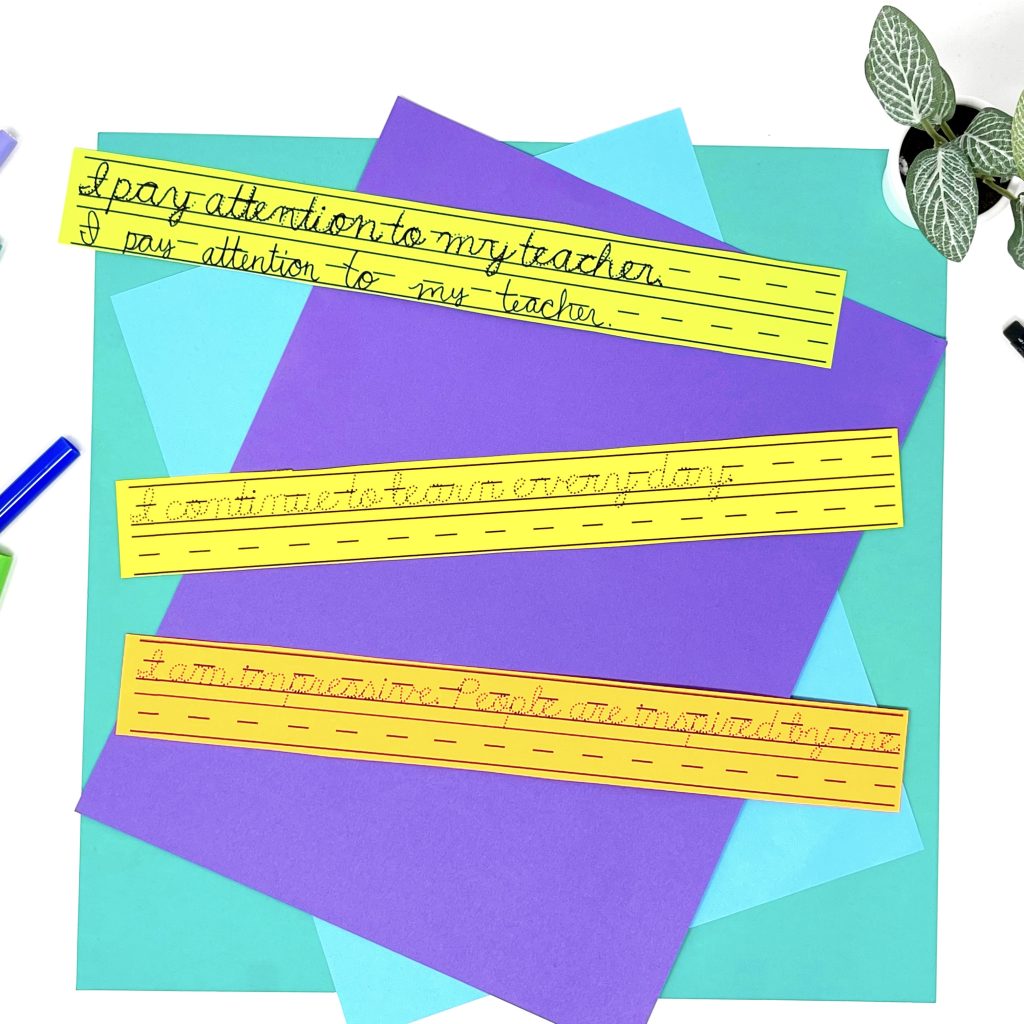Are you thinking of teaching cursive writing to your students or your child? I’m glad you are interested because there are so many amazing benefits to learning cursive!
In this blog post, we’ll go over some of the benefits of learning cursive, some easy ways to teach cursive, and activities to make learning cursive fun for your students!

The Benefits of Teaching Cursive Writing
In a world dominated by keyboards and touch screens, you may wonder, “Is cursive still relevant?” The answer is a resounding yes! Research has revealed that learning cursive offers many cognitive and academic benefits.
According to a study published in the Frontiers in Psychology journal, students who learn cursive handwriting exhibit improved neural connections and increased overall learning success. Furthermore, the act of penning cursive has been correlated with heightened memory retention, better comprehension, and enhanced creative expression!
Easy Ways to Teach Cursive Writing When You Don’t Have a Lot of Time
Many teachers and parents are interested in teaching their students or children cursive but aren’t sure where to begin.
There is no right way to teach cursive, but most agree that introducing one letter at a time is the best way.
- Step 1: Introduce lowercase cursive letters.
- Step 2: Introduce uppercase cursive letters.
- Step 3: Teach how to connect letters.
- Step 4: Practice writing simple words in cursive.
- Step 5: Practice writing sentences in cursive.
For all of those steps, be sure to have students trace and then copy the letter, word, or sentence on a line. This helps them develop muscle memory for forming letters.
You can begin to teach cursive writing with just a few minutes each day.
In your classroom, you can make introducing letters part of morning work. Then, students can practice at a center later in the day.
With these Positive Affirmation Cursive Handwriting Sentences, students will trace a positive affirmation sentence and then recopy it on the line below.
This is a great way to practice cursive when you are short on time!
This resource also includes alphabet pages to introduce the letters.
Activities to Make Cursive Fun
- Sensory Writing Materials: Engage students in sensory writing experiences by using materials such as kinetic sand, shaving cream, colored rice, and coffee grounds. These tactile activities provide a unique way to practice cursive while stimulating different senses.
- Disappearing Ink Games: Incorporate disappearing ink into cursive writing games like Hangman, Madlibs, or tic-tac-toe. The novelty of disappearing ink adds an element of fun and challenge to cursive practice sessions.
- Season-Themed Cursive Words: Write season-themed words such as “snow,” “fireplace,” “flowers,” “pumpkins,” and “ice” on paper strips and place them in a special container. Students can practice writing these seasonal words in cursive, combining penmanship practice with seasonal vocabulary.
- Funny Jokes with Cursive Exercises: Introduce cursive handwriting exercises paired with funny jokes, creating an entertaining and lighthearted approach to practicing cursive writing. Write a joke in cursive on the board, and then have your students write their answers in cursive.
- Cursive Writing Practice with Disguised Learning: Incorporate cursive writing into activities that also involve other subjects, such as writing cursive spelling words, science terms, or historical facts. This disguised learning approach makes cursive practice more engaging and integrated with other areas of study.
Get resources to teach cursive handwriting!






